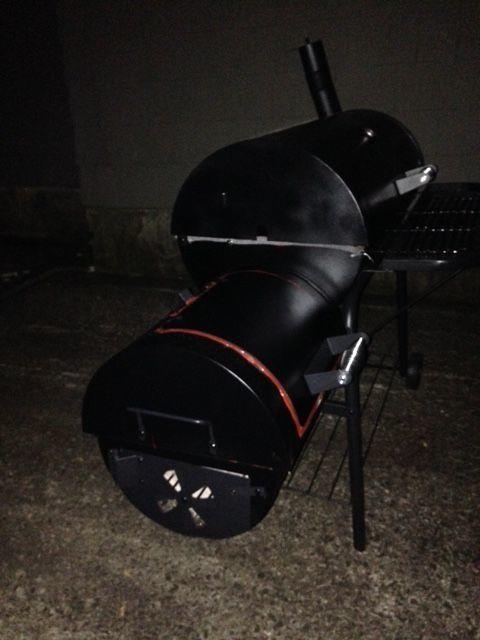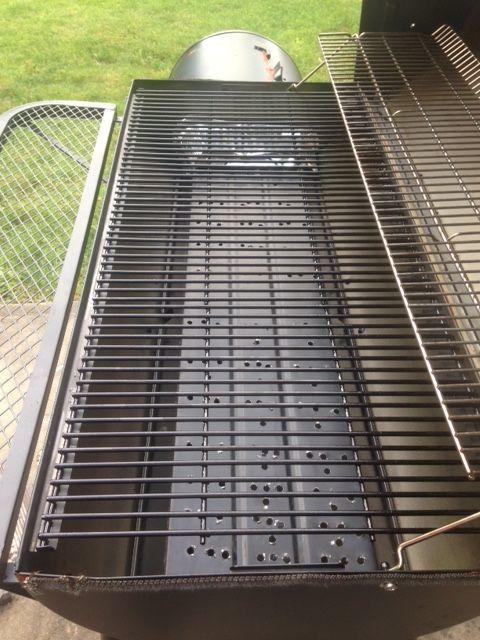- Jun 6, 2016
- 15
- 18
I know there have been other threads on this, so apologies for starting a new one. The most recent I saw was several years old.
I've just put together a cheap offset smoker, and tightened it up pretty good with RTV and Nomex gasket material. The burn-in went really well.
Following advice found in various forums, I picked up some 3" flexible aluminum duct, intending to run that from the chimney to grill level.
I've improvised a baffle and a heat/smoke distributor along the bottom of the cook chamber.
My problem is, I'm in love with the warming rack. I love smoked baloney, and the warming rack seems a good place to smoke some baloney and sausages. If I leave the warming rack in, the way this smoker is set up, it will crush the duct every time I open the cook chamber.
My question is: How important do you think the chimney-to-grate duct is, for temperature regulation?
I'm doing a test cook on my new smoker this weekend, with a couple of grill-level thermometers. This should give me a good idea whether I need a smokestack duct or not. But if anybody who's been through this drill already has an educated opinion, I'd sure listen to it.
Thanks for any advice.
I've just put together a cheap offset smoker, and tightened it up pretty good with RTV and Nomex gasket material. The burn-in went really well.
Following advice found in various forums, I picked up some 3" flexible aluminum duct, intending to run that from the chimney to grill level.
I've improvised a baffle and a heat/smoke distributor along the bottom of the cook chamber.
My problem is, I'm in love with the warming rack. I love smoked baloney, and the warming rack seems a good place to smoke some baloney and sausages. If I leave the warming rack in, the way this smoker is set up, it will crush the duct every time I open the cook chamber.
My question is: How important do you think the chimney-to-grate duct is, for temperature regulation?
I'm doing a test cook on my new smoker this weekend, with a couple of grill-level thermometers. This should give me a good idea whether I need a smokestack duct or not. But if anybody who's been through this drill already has an educated opinion, I'd sure listen to it.
Thanks for any advice.








